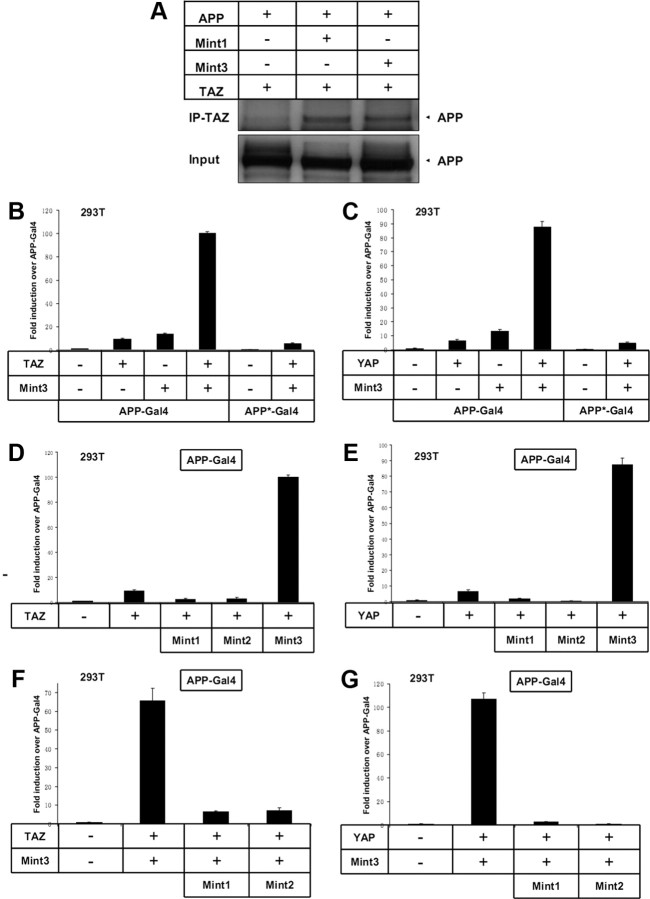
| PMC full text: |
|
Figure 5.

Transcriptionally active triple protein complexes: APP–Mint3–TAZ and APP–Mint3–YAP. A, Coimmunoprecipitation of TAZ and APP in the presence and absence of Mint1 and Mint3. B–E, TAZ and YAP potently stimulate transcription mediated by APP fused to Gal4 DNA binding domain in the presence of Mint3. B, C, Potent transactivation of transcription is achieved with APP fused to Gal4 DNA binding domains only when both Mint3 and TAZ (B)/YAP (C) are present. Note the inhibition of stimulation by mutation of the APP Mint3 binding site. D, E, This effect is specific for Mint3 because in the presence of Mint1 or Mint2, TAZ (D)/YAP (E) does not induce high-level transactivation. F, G, Coexpressed Mint1 or Mint2 over APP–Gal4–Mint3–TAZ (F)/YAP (G) inhibited Mint3-TAZ (F)/YAP (G) directed transactivation. Diagrams exhibit representative experiments in which cells were cotransfected with a Gal4-luciferase reporter plasmid (to measure transactivation), a β-galactosidase plasmid (to normalize for transfection efficiency), and the test plasmids identified below the bars. The APP*-Gal4 construct contains a point mutation in the NPTY sequence of the APP cytoplasmic tail that prevents Mint3 binding. The normalized luciferase activity is expressed as fold induction over transcription by APP-Gal4 alone. Error bars indicate SD.